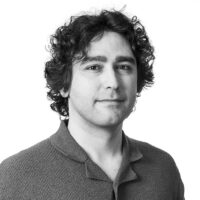2024 Patrick T. Curran Fellowship
Every year, SWA invites its employees to submit proposals for projects that expand the discipline through innovation and exploration. Named after a talented landscape architect who passed away, SWA founded the Patrick T. Curran fellowship in 2007, which has produced over 45 research theses from over 60 fellows. Upon completing their research, the fellows attend the annual firm-wide principals meeting to present their findings.

Ozan joined SWA Houston in 2019 while completing his master’s at Rice University. He has contributed to several projects including the Tianjin Harbor Waterfront and Suzhou Mixed Development in China. Previously, Ozan worked on urban/territorial projects across the globe during his studies at Harvard GSD, Rice, and Istanbul Technical University. His design work and collaborations have been awarded in national and international competitions and his involvement in architectural education continues in the form of guest critics and lectures. Ozan sees urban design as a critical instrument to overcome the social, political, and ecological challenges of the 21st century.
Invasive Species
With a background in architecture, Ozan’s work in SWA’s Houston studio focuses on large-scale master plans. Over his career, he’s become increasingly aware of the presence of digital technology and its impact on the built environment and the public realm. Autonomous cars have become common sightings, especially in cities where the Uber-competitor Waymo roams the streets, or along sidewalks as robots replace delivery drivers for DoorDash. Location-based apps have reshaped our spatial awareness and navigation systems. Public art is often tailored to Instagram-able spectacles. Knowing these advancements are only the beginning, Ozan asked himself “How do we design and shape the physical world to respond to the digital realm?” “Invasive species” are not just the non-native organisms we know to cause havoc in foreign environments, but the cyber-physical systems taking over the urban landscape. Ozan explored the physical skin of our cities, now coupled with a layer of digital infrastructure.

Ozan traveled to four cities in China, presenting his topic and exploring how rapid urban transformation changes surveillance in the public sphere. In Shanghai, Chongqing, Shenzhen, and Hong Kong, cities with populations three to sixteen times that of Houston, Ozan sensed the ubiquitous presence of cameras across buildings, light structures, and free-standing forms, to the point where they became a synthetic type of nature.
Looking back 10, 20, and even 50 years ago to the depiction of the future in media, many concepts around technology and AI have arrived (minus the flying cars). Ozan explored our role as nodes in a vast network, acting within a larger data set that can be captured and analyzed. The ubiquity of digital devices allows us to exist in multiple realities at once, ever-reachable in person and online–the fusion of human and machine.
Previously, the digital and physical worlds were conceived as two separate layers, but as designers shaping the public realm, Ozan discovered the two realms have joined to form one spectrum. The increase in real-time monitoring in landscape design is an example of the overlap, where sensors can help regulate temperatures and provide information about species’ health and area use. Digital twins and augmented experiences allow people to interact with spaces they are not physically in. The 50-meter Supertrees in Singapore’s Botanic Garden blend giant man-made structures with natural materials, creating an other-worldly experience for the viewer.
Ozan compared the benefits and the drawbacks of working with “invasive species” in the public realm. Designers often engage with digital systems as they plan around requirements, such as properly placing cameras along a path at the correct frequency. Rather than work against this growing technology, Ozan offered a set of questions to guide their works, focusing on an equilibrium between privacy, accessibility, and aesthetics. A few questions include: Are the digital elements engaging without overwhelming users? Does the design establish a unified language through integrating and coordinating digital infrastructures? Are designated areas for disconnection thoughtfully incorporated? Are environmental monitoring sensors integrated into the project? Are digital features included to encourage active and engaging lifestyles?


